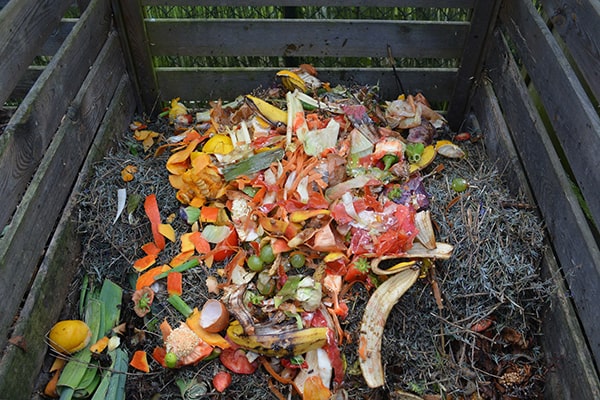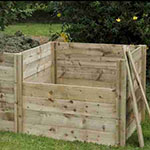
Advice on producing your own compost at home
By making your own compost, you will save money and help the environment by recycling food scraps and reducing the amount of waste you send to landfill. Effectively you are using your kitchen and office waste as a free soil improver. You can use this compost to enhance your gardens soil to grow fruit, vegetables or other plants – either directly on the soil or within a raised bed.
Our Home Composter Options
At shedstore, we have a selection of timber composters which can be used to store and contain your compost pile. Our selection includes:
How to get started making compost (hot method)
- Start your compost heap in early spring to fully take advantage of the warmer temperatures
- Place your compost bin directly onto soil so that microbes and worms have access
- Begin by placing woody material, like twigs, at the bottom for air improved circulation and drainage
- You will need to have a balanced mix Carbon and Nitrogen rich materials
- Layer dry and moist materials to build up the pile over time
- Once your heap is full it should begin to heat-up
- If the temperature drops, you will need to turn the material, using a garden folk (repeat every couple of weeks)
- During Summer you will need to turn the pile more and add water if it starts to dry out
The composition of your pile and how much you turn it, will determine how long it takes for the material to decompose. With a good balance of dry and wet materials and regular turning you could have compost with in a four months. However, tf you have mainly hard garden waste and leave it to do its own thing, the process could take a year or more.
In Autumn make leafmould
Leafmould is a great free soil additive to improve nutrients, but also a garden lawn conditioner and can be used for mulch. Autumn is a great time to make leafmould and will stop your compost heap from becoming dominated with leaves.
Essentially, you stuff a hessian or perforated plastic bag with leaves, leave in a corner of your garden and forget about them for a year or two.
What can I compost?
Quite often it can be difficult to know just what can and cannot go into the compost heap. This is especially true for kitchen and office waste. Below are some examples to give you an idea:
- Garden waste can include: Grass cuttings, twigs and fallen / pruned branches, weeds and flower cuttings
- Kitchen waste that can include: Egg shells, fruit and vegetable scraps, coffee grounds (including paper filters) and tea bags
- Office waste: Shredded paper including news papers and cardboard (nothing glossy)
- Materials which shouldn't be used: Meat or fish scraps and bones, dairy, cat litter, dog droppings and weeds which are seeding





